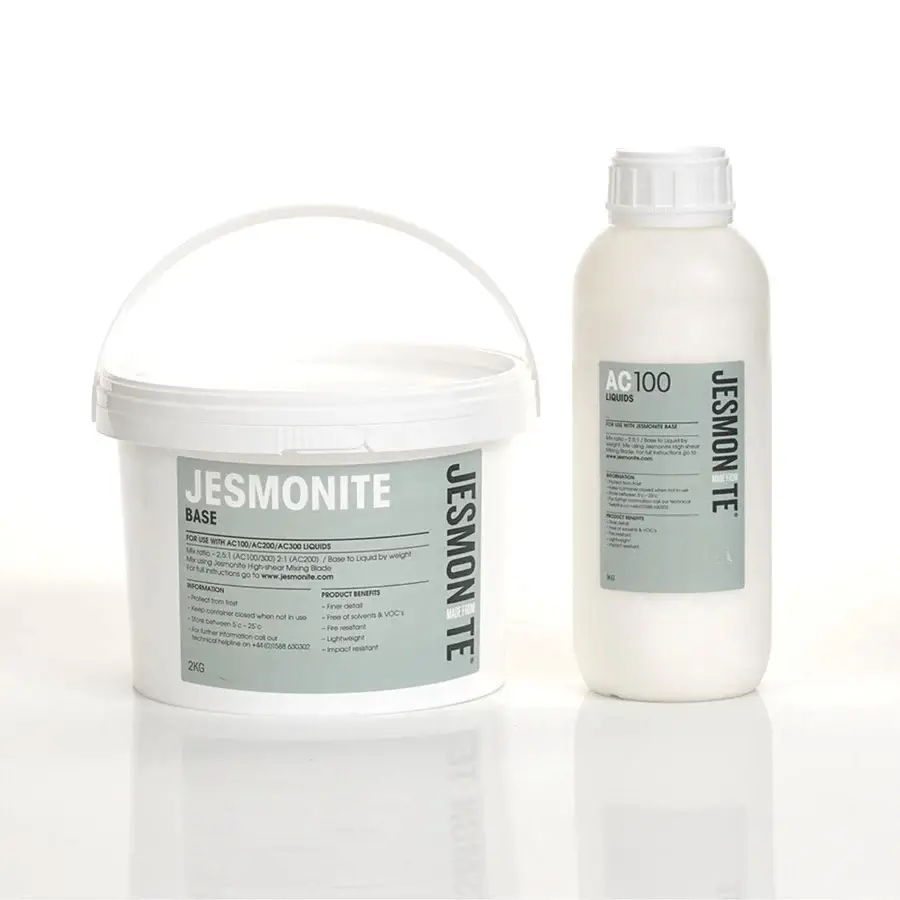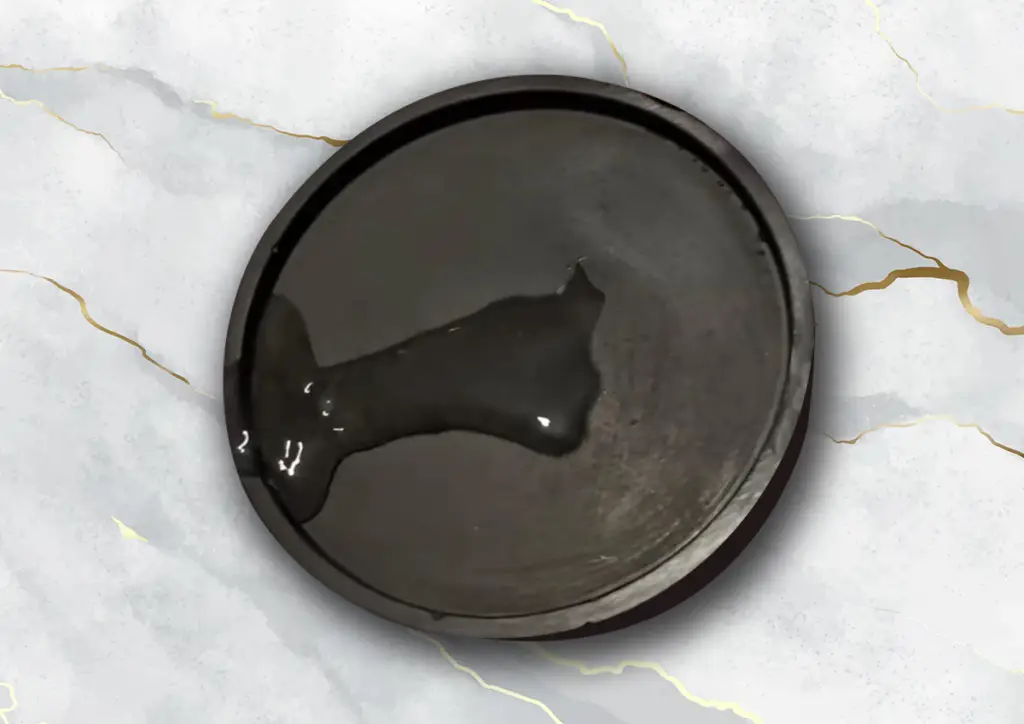Is Jesmonite eco-friendly? A Controversial Analysis!
As an Amazon Associate, Ecotero earns from qualifying purchases.
This composite material, known for its versatility and durability, has pirouetted into the limelight. From home decor to architectural applications, Jesmonite has captured a significant share of the market.
So what exactly is this newfangled material that’s sparking interest among artists and designers alike? Is Jesmonite eco-friendly truly?

A Brief Overview of Jesmonite
Jesmonite was first introduced to our world in 1984 by none other than Peter Hawkins. He brought it into existence as an environmentally friendly alternative to fiberglass and traditional building materials such as concrete and plaster.

The name ‘Jesmonite’ itself seems to carry an air of mystery and intrigue.
Essentially, it is a composite blend echoing the best qualities of both plaster and resin. The substance owes its popularity not just to its versatility but also to its inherent safety features.
Non-toxic, flame-resistant, lightweight yet robust – these characteristics make it an enviable choice for myriad applications ranging from sculpture making to facade cladding.
However, despite these seemingly invincible qualities, one can’t help but wonder about its environmental credentials – after all being friendly towards humans does not necessarily imply being friends with nature too!
Why The Sudden Interest In Jesmonite?
We live in times where consciousness towards sustainability is not just fashionable but also imperative; we are more aware than ever before about our choices’ impact on Mother Earth.
These evolving attitudes have led us to question everything around us – from what we consume daily (whether food or gadgets) down to the tiniest details like paper bags or even straws!
So why should our building materials escape scrutiny? This increased focus on eco-consciousness is precisely why Jesmonite’s claim as an ‘eco-friendly’ material warrants exploration.
Its reputation for being kinder to both human health (thanks to low VOC emissions) and the environment compared with traditional resin-based products makes it an attractive proposition indeed.
Nevertheless, as responsible citizens aiming for true sustainability rather than mere lip service – we owe it to ourselves (and future generations!) to dig deeper into this ‘eco-friendly’ tag that brands so often flaunt without discretion.
What is Jesmonite?
Composition of Jesmonite
Jesmonite comprises a blend of a water-based acrylic resin and a reactive mineral base.
The real magic happens when these two components combine. The resulting compound hardens to form a robust yet lightweight substance versatile enough to take on almost any shape or form – imagine plasticine with superpowers!
Moreover, its non-toxic properties make it an alluring alternative to polyester and other solvent-based resins.

In addition to being flame-resistant, this wondrous material possesses excellent impact resistance and can mimic various textures such as stone, metal, wood, and even leather!
Uses and Properties
From architectural cladding for buildings to intricate sculptures in art studios; from stylish furniture pieces at home to detailed props on movie sets.
One outstanding quality that lends itself so readily to these diverse uses is its adaptability in terms of texture, color, and finish.
With appropriate pigments added during the casting process, you can obtain hues ranging from vibrant coral reds or tranquil turquoise blues right through to nuanced neutrals.
When it comes down to texture, Jesmonite doesn’t disappoint either. By adding different types of filler materials like metal powders or stone chips during the casting process you can create surfaces that mimic various materials like rusted iron or polished marble with astonishing realism.
Possessing a superior strength-to-weight ratio compared to traditional building materials like concrete or terracotta makes it an architect’s ally for creating complex structures without compromising on safety standards.
Understanding Eco-friendliness
The Essence of Eco-Friendliness: Beyond the Buzzword
In today’s world, “eco-friendly” isn’t merely a buzzword floating around the green community; it has emerged as an essential criterion in our choices, be they consumer products, construction materials, or fashion. But what exactly does eco-friendly mean?
Essentially, if a product is tagged ‘eco-friendly’, it implies that it is not harmful to the environment. This significance expands comprehensively to its entire life cycle — from extraction or creation to disposal.
To peel back another layer, eco-friendly also signals sustainable practices. It means we are borrowing resources from Mother Nature in such a way that future generations can also avail them.
When we label something as ‘eco-friendly’, we’re essentially giving it a badge of honor; an affirmation that it plays well with our planet and respects its integrity.
However, like any other term widely used these days, ‘eco-friendly’ has been subject to overuse and in some instances misuse – leading to what many refer to as “greenwashing.”
This practice involves making misleading claims about the environmental benefits of a product or service causing consumers to perceive it as more environmentally friendly than it actually is.
Hence understanding what true eco-friendliness entails can help us make informed decisions and avoid falling for such misleading marketing tactics.
Eco-Friendly Evaluation
Let’s look at how we evaluate whether something is eco-friendly or not. The process isn’t simple nor straightforward.
There’s no single universal checklist where you tick boxes off. Instead, there are several crucial factors at play that collectively shape up the profile of an item’s eco-friendliness.
- Firstly, consider the raw materials used to make the product – are they renewable? Non-toxic?
- Do they come from sustainably managed sources?
- The next major factor comes down to manufacturing processes – how much energy does production consume?
- Are there harmful emissions involved?
- Does it generate waste?
- Will it break down after a few uses only adding to waste piles?
- How does one dispose of this material once its purpose has been served?
- Can it decompose naturally without leaving toxic residues behind?
These are some pertinent queries one should ask before labeling anything “Eco-Friendly.”
Is Jesmonite Wearing Green? Evaluating its Eco-friendliness
Let’s assess the items we have mentioned earlier.

Production Process: Is it Clean or Messy?
Unlike many synthetic materials, Jesmonite’s production doesn’t entail high-temperature processes or lengthy periods of curing that consume vast amounts of energy.
In fact, it’s a water-based material meaning it doesn’t require harmful solvents for blending or curing.
This starkly contrasts with other similar materials like polyurethane resin which requires toxic chemicals to cure properly. It’s advantageous as well because time-consuming and energy-draining oven-drying methods are spared altogether.
Jesmonite also surpasses its counterparts in terms of safety during workability.
Its low toxicity reduces health risks for workers involved in its production and application processes while simultaneously reducing workplace emissions – a win-win situation for people and the planet alike.
Resource Consumption: How Much Does it Take?
The fewer raw materials a product requires, the smaller its environmental footprint tends to be.
Jesmonite’s composition consists predominantly of a gypsum-derived base mixed with an acrylic liquid – both sourced sustainably without depleting finite resources or damaging ecosystems.
Moreover, because Jesmonite can be cast into virtually any shape or design, waste generated through offcuts or excess material during manufacture is minimal compared to less adaptable alternatives such as concrete or stone.
The same efficiency extends into the packaging phase as well: with its lightweight nature compared to traditional building materials like concrete or metal, transportation costs – both monetary and environmental – are reduced significantly.
Thus, Jesmonite proves itself not only efficient but also economical when considering resource consumption from cradle to grave.
What are the disposal options?
Due to its unique composition of gypsum and acrylic resin, it doesn’t fall neatly into standard recycling categories. As such, most recycling facilities are not equipped to reprocess it.
Moreover, dumping it in landfills isn’t particularly eco-friendly as this practice contributes to soil pollution and waste generation issues. The best option seems to be repurposing or upcycling Jesmonite items whenever possible.
Alternatively, manufacturers could potentially develop a take-back program where they reclaim old Jesmonite pieces for reprocessing or reuse within their production process.
Admittedly though, these options are more about mitigating impact rather than totally eliminating waste.
Life Expectancy of a Jesmonite Piece
Jesmonite’s robustness coupled with resistance towards fire and water makes it fairly long-lasting compared to other materials used in similar applications such as plaster or cement-based substances.
Furthermore, its versatility allows it to mimic other materials like stone or metal, often outlasting them in terms of maintaining the original appearance and structural soundness.
However, while longevity is beneficial from an environmental perspective by reducing overall consumption rates over time – it does present a potential downside: If improperly discarded at the end of its lifecycle (which might span several decades), you’ve got an indestructible waste problem on your hands – one that won’t easily decompose naturally nor can be readily recycled conveniently using existing facilities and processes.
The Good, the Bad, and the Ugly Side of Jesmonite’s Environmental Impact
The Bright Side: Positive Impacts on Environment
In our ceaseless quest for harmony with mother nature, it is heartening to uncover the eco-positive aspects of Jesmonite. First and foremost, this composite material is solvent-free.
The absence of solvents not only means that it’s less harmful to our health but also that there’s no release of volatile organic compounds (VOCs) into the atmosphere. VOCs are notorious for contributing to environmental harm such as ozone depletion and global warming.
Secondly, the production of Jesmonite requires significantly lesser energy compared to other materials like concrete or resin-based products. Lower energy consumption directly translates into fewer carbon emissions, making its manufacture a comparatively greener process.
Let’s not overlook the fact that Jesmonite allows us to replicate textures like wood or stone without having to exploit these natural resources. This serves as a beneficial strategy in preserving our precious ecosystems by reducing deforestation and quarrying.
Shadows over Sunshine: Negative Impacts
However, we cannot turn a blind eye towards some shadows cast upon its green credentials.
To begin with, one key component of Jesmonite is acrylic resin – a non-renewable petroleum derivative.
Although it’s water-based and has lower toxicity compared to other resins like epoxy or polyester, its source material remains a cause for concern due to its non-sustainability and potential impact on fossil fuel consumption.
A closely related issue lies in what happens at the end of a Jesmonite object’s life cycle. A common misconception is that being made largely from minerals makes it completely biodegradable.
Yet the addition of acrylic resin complicates matters because once cured; it becomes virtually indestructible – hence neither compostable nor recyclable in conventional ways.
Another downside involves inevitable waste production during the manufacturing and crafting process with Jesmonite particularly when castings don’t go as planned or molds are incorrectly poured leading to material wastage which can’t be reused meaningfully due to the hardening property of this composite medium.
Remember all that glitters isn’t gold! While there are indeed several eco-advantages linked with using Jesmonite; we should also remain cognisant about these downsides and strive towards responsible & cautious usage along with ongoing research for even greener alternatives.
Alternatives to Jesmonite
Bio-resins
Bio-resins are derived from biological sources—plants, to be specific.
This characteristic alone makes them a serious contender for the green crown. But their eco-credentials go beyond their plant-based origin.
The production process of bio-resin necessitates lower energy consumption compared to conventional resins, reducing greenhouse gas emissions significantly.
Moreover, they can degrade organically over time without leaving toxic residues; nature reclaims her own in the most harmonious way possible.
However, it’s important to note that not all bio-resins are created equal in terms of eco-friendliness. Some contain petroleum-based ingredients or require harmful solvents during processing, diluting their green benefits somewhat.
Cork, Bamboo, and More
While artificial materials like Jesmonite and even bio-resin with their natural origins have merits, sometimes the best solutions come direct from Mother Nature herself with little or no processing required at all.
Cork is one such gift from nature that combines functionality with sustainability in an impressive way.
Harvested from the bark of cork oak trees without causing any harm or necessitating felling—the tree continues growing even after bark removal—cork is renewable and biodegradable as well as being highly versatile.
Bamboo is another champion of sustainability that deserves mention here.
With rapid growth rates that outstrip any other wood species’ ability (some types grow up to 35 inches per day), bamboo ensures its supply never runs short thus safeguarding against deforestation—an environmental issue of utmost concern today.
Alongside cork and bamboo are other natural materials like hempcrete (a mix of hemp hurds and lime), mycelium (mushroom roots), straw bales—all providing sustainable yet effective alternatives for various applications where synthetic materials might typically dominate.
Verdict: Is Jesmonite Eco-Friendly?
Jesmonite is not truly Eco-Friendly, though it has made strides towards lessening environmental impacts compared to other synthetic resins on the market.
Jesmonite won’t easily decompose naturally nor can be readily recycled conveniently using existing facilities and processes. Hence, if it is not properly discarded at the end of its lifecycle, you’ve got an indestructible waste problem on your hands.
Perhaps with future developments in technology and sustainability practices within manufacturing sectors, we’ll see further improvements in reducing any residual impact this material has on our planet.
